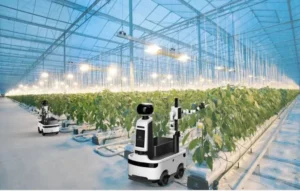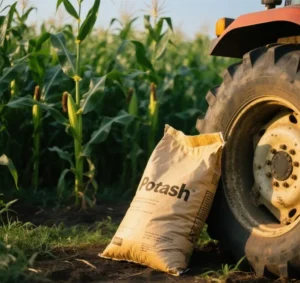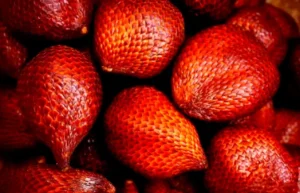Though often overlooked, boron is a crucial micronutrient that plays a pivotal role in plant growth, food security, and agricultural sustainability. Although plants require only small amounts of boron, it significantly impacts crop productivity and resilience. For instance, research indicates that boron deficiency in cotton leads to inferior fiber quality and yield, whereas sufficient boron application enhances wheat’s disease and stress resistance. This article synthesizes global and China-centric perspectives on boron’s physiological functions, resource distribution, application strategies, and future outlooks. Topics include innovation in extraction technologies, precision agriculture, and geopolitical resilience. The goal is to inform decision-making in the international agro-input sector.
Global and Domestic Boron Resources: A Geostrategic Landscape
Globally, boron reserves are highly concentrated, with 99% held by five nations (2021 data): Turkey dominates with 89.3% (up 19-fold in a decade), followed by Russia, the United States, Chile, and China, which holds 1.8% and is ranked fifth. Turkey’s control over high-grade colemanite and ulexite ores influences geopolitical dynamics in boron supply chains. Despite its limited reserves, China faces unique challenges. Eighty percent of its deposits are low grade (B₂O₃ <12%), and they have complex mineralogy (e.g., szaibelyite and ludwigite). Key regions include Qinghai (65% in salt lake brine), Liaoning (29.4%, a major production base), and Tibet (2.77%). Reliance on low-grade ores necessitates advanced extraction technologies, driving China’s focus on resource efficiency and innovation. Turkey’s annual exports of boric acid reached 1.2 million metric tons, solidifying its role as a global supplier and influencing pricing dynamics. Diversifying extraction methods for low-grade ores, such as those in Liaoning’s ludwigite deposits, will be critical to reducing geopolitical dependencies and ensuring supply stability.
Boron’s Physiological Roles: Balancing Crop Vitality
Boron is indispensable for:
- Cell Wall Integrity: – Cross-linking pectin polysaccharides for structural stability. This is particularly important for fruits and vegetables because it helps them maintain their shape and firmness during storage and transportation.
- Sugar Translocation: Facilitating phloem transport is vital for energy supply. In crops like sugarcane, efficient sugar translocation can significantly increase sugar content in the stalks.
- Reproductive growth: It is essential for pollen tube elongation and prevents sterile florets in wheat or empty corn cobs. For instance, adequate boron levels in wheat can prevent floret sterility and ensure higher grain yields.
- Stress Mitigation: Enhances drought tolerance and disease resistance. In regions with an irregular water supply, boron can help crops such as cotton and corn adapt to drought conditions by reducing water loss and enhancing root development.
However, managing boron is delicate. Deficiencies can result in yield losses of up to 30% in crops like rapeseed, while toxicity (e.g., >2 mg/kg soil B) can harm crops. This narrow window demands precision and is exacerbated by challenges such as leaching in regions with high rainfall or boron fixation in alkaline soils (pH > 7.5). Innovative solutions, such as foliar sprays with 90% absorption efficiency (compared to 30% for soil applications) or chelated formulations (e.g., glycine-chelated boron), offer promising ways to optimize delivery.
Boron Fertilizer Applications: Crop-Specific Insights
1. Staple Crops
Wheat: Applying 1–2 kg of boron per hectare can increase yield by 5.5% and reduce sterility. For example, a study in China found that this application rate significantly improved wheat quality.
Corn: Restoring tassel development and kernel set can be achieved by applying 0.5–1.5 kg of boron per hectare. In the United States, particularly in Iowa, farmers have reported higher corn yields after applying boron at this rate.
Rice: A foliar application of 1 kg B/ha can increase chlorophyll content by 20% and improve grain quality. One case study from Japan showed that this practice increased rice’s disease resistance.
Case study: Heilongjiang’s wheat crop failure (1972–73) was attributed to boron deficiency, highlighting the critical role of this micronutrient. This event spurred the research and implementation of boron fertilization strategies across China, improving crop health and productivity.
2. Economic Crops
Cotton: Deficiency reduces stomatal conductance by 40%; soil application of 2 kg B/ha enhances P/N uptake by 25%.
Rapeseed: The optimal rate of 22.5 kg B/ha increases oil content by 15%, while excessive rates (>45 kg B/ha) cause an 8.8% yield decline.
These data underscore the role of boron in balancing productivity and risk.
Innovative Application Techniques
- Foliar Sprays: Solubor® (20.5% boron) and chelated formulations allow for rapid absorption.
- Seed priming: Boron pretreatment ensures early seedling vigor (e.g., in corn).
- Soil Amendments: Co-granulation with organic acids (e.g., humates) mitigates fixation in alkaline soils.
These technologies enhance efficiency and reduce environmental impact.
Future Outlooks: Sustainability, Technology, and Collaboration
1. Resource Sustainability and Extraction Technologies:
China’s focus on nano-boron fertilizers aims to improve efficiency and reduce waste. Advanced methods for processing complex ores (e.g., lundwigite in Liaoning) will ensure a stable domestic supply.
Turkey’s 1.2 million tons per year of boric acid exports highlight its role as a global supplier, creating the need for diversification. Research on low-grade ore extraction could reduce reliance on high-grade deposits.
2. Precision Agriculture Integration
IoT soil sensors and AI models will optimize boron (B) application rates, minimizing leaching risks and costs. By 2030, 30% of global farmland is projected to adopt such systems (FAO estimate).
3.Human Health and Environmental Considerations:
Boron plays a role in human calcium metabolism (via enriched crops), which aligns with health-conscious markets. Research on non-toxic chelates and controlled-release formulations will mitigate health risks.
4. Policy and Collaboration
China’s “Green Agriculture” policies prioritize boron research and development (R&D), aligning with Belt and Road initiatives to share technologies with agrarian nations.
International collaborations on boron management standards (e.g., OECD guidelines) will harmonize best practices.
Conclusion: A Strategic Investment for Future Food Security
Boron’s dual status as a crop essential and a geostrategic resource requires balanced policies that optimize agricultural use while conserving reserves. The agro-input sector can unlock boron’s full potential by embracing precision technologies, sustainable extraction methods, and collaborative research. As the global demand for food increases, investment in boron innovation—both technological and geopolitical—will be crucial to ensuring productivity, environmental stewardship, and human health. The future of boron fertilizers lies in more than just meeting micronutrient needs; it lies in shaping a resilient and sustainable global food system.









